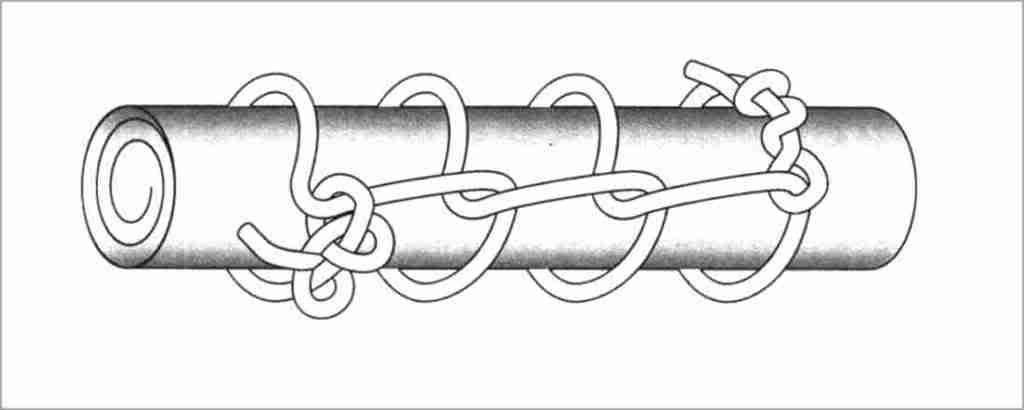Icicle Hitch
Aplications : The icicle hitch can attach a line to the smoothest of spars or rails (including a polished brass fireman's pole), even when it tapers towards the direction of pull.
Method :
A. End of spar accessible
Take at least four turns around the rail or spar (1); take more if an exceptionally secure hitch is required. With the working end, create a generous loop hanging down behind the standing part (2). Pass this loop in front of all other parts and drop it, without twisting, over the end of the spar (3). Draw everything up tight by pulling first the standing part and then the working end at right-angles to the spar. Now tighten it all again. Only then can the load be carefully applied, and the knot pulled out to the shape shown (4). There must be no separation of the two turns on the thicker part of the spar. If this occurs, add extra turns at the start. As long as two turns on the thicker part remain snug together, the hitch should hold fast.
B. End of spar inaccessible
Using the working end, assemble the knot as shown (5-8), but then tighten it until it behaves as already detailed in A above.
History : An ex-tended pile hitch (see p. 72), the icicle hitch was devised by John Smith of Surrey, England. He demonstrated his knot's quite exceptional grip in May 1990 at the eighth Annual General Meeting of the International Guild of Knot Tyers, held at the training ship Steadfast, a Sea Cadet shore establishment at Farnham in Hampshire. Smith hung by this hitch from a splicing fid, which was suspended, point down, from the ceiling.






















